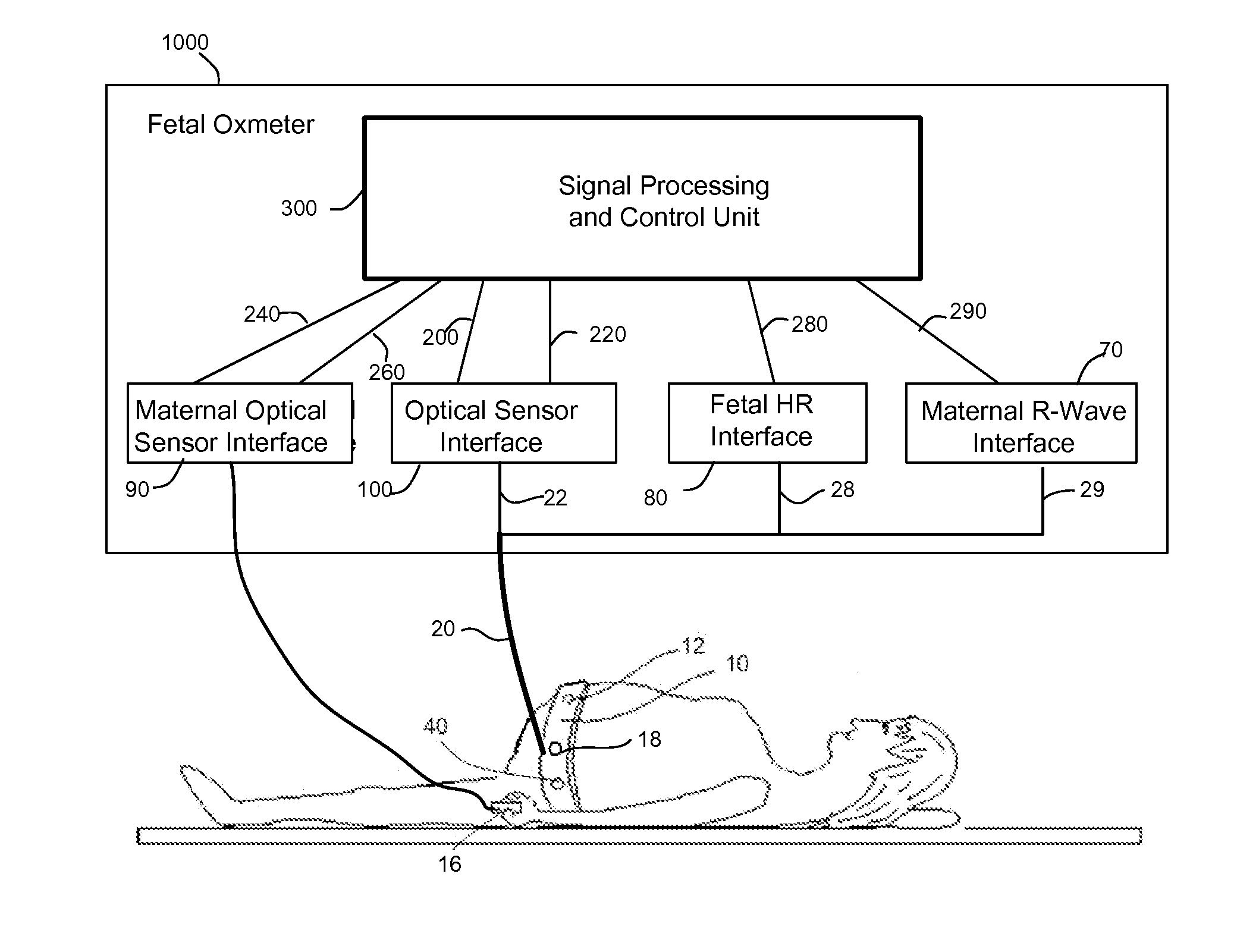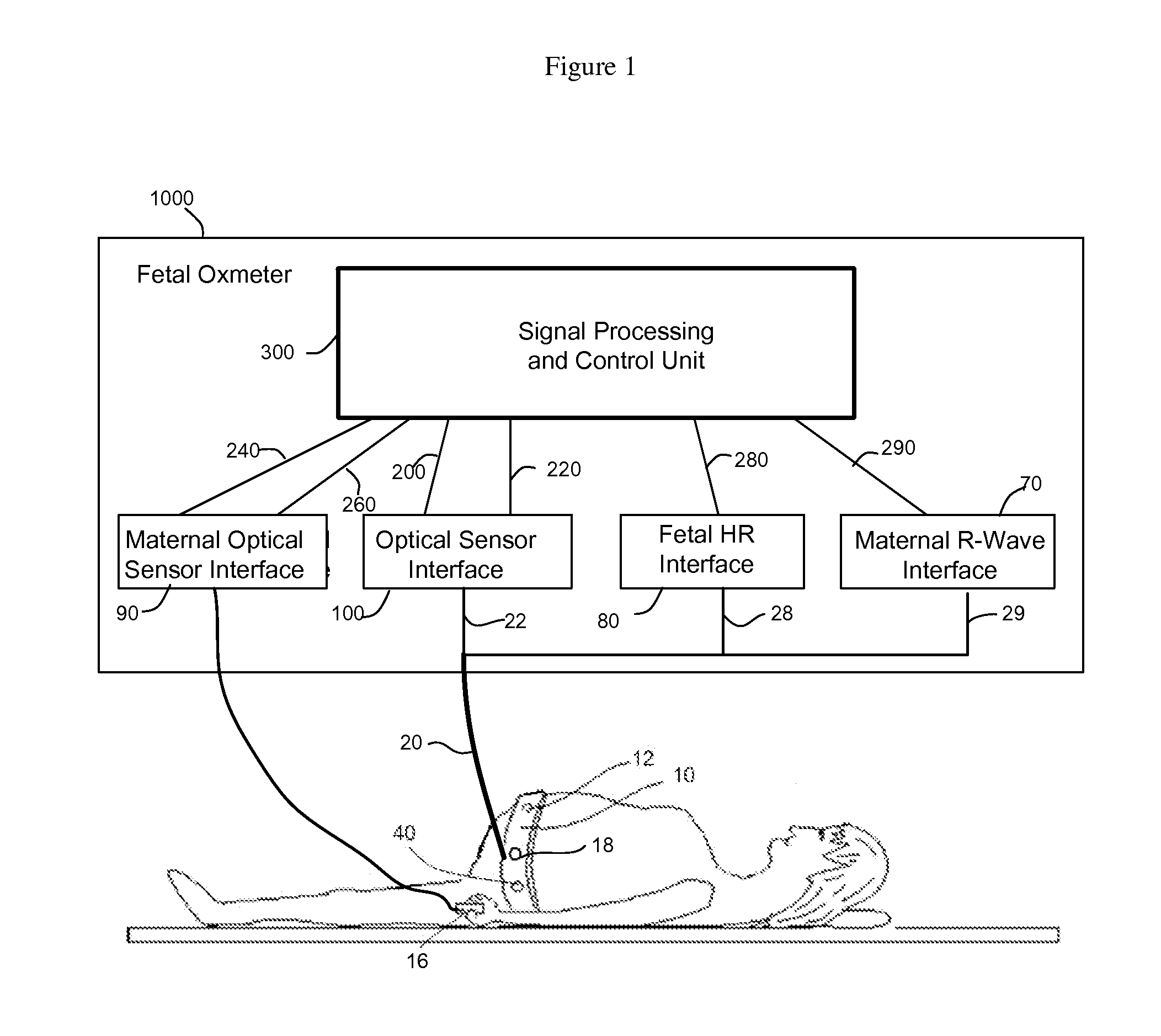Method and Apparatus for Non-invasive Fetal Oximetry
a fetal oximetry and non-invasive technology, applied in the field of methods and apparatus for non-invasive fetal oximetry, can solve the problems of fetal brain damage, dangerous time for the fetus, dangerous fetal blood oxygen saturation level, etc., and achieve the effect of improving accuracy
- Summary
- Abstract
- Description
- Claims
- Application Information
AI Technical Summary
Benefits of technology
Problems solved by technology
Method used
Image
Examples
Embodiment Construction
[0032]Blood oxygen saturation levels are a critical measure of a patient's well-being. One well known and widely accepted means to measure the oxygen saturation level of blood is oximetry. The light absorption signal of blood hemoglobin differs markedly, as a function of light wavelength, depending upon if hemoglobin is oxygenated or deoxygenated. Thus by monitoring blood light absorption levels at multiple wavelengths, the percentage of the hemoglobin that is bound to oxygen can be estimated to a high degree of accuracy. At red and near infrared wavelengths, the oxygenated form of hemoglobin (oxy-hemoglobin) tends to absorb light more at longer wavelengths, such as 850 nanometers (nm), while the deoxygenated form of hemoglobin (deoxy-hemoglobin) tends to absorb light more at shorter wavelengths, such as 660 nm.
[0033]These wavelengths (660 nm and 850 nm) are commonly used for oximetry, and indeed are often used here in this specification as well as examples. However as will be discu...
PUM
 Login to View More
Login to View More Abstract
Description
Claims
Application Information
 Login to View More
Login to View More - R&D
- Intellectual Property
- Life Sciences
- Materials
- Tech Scout
- Unparalleled Data Quality
- Higher Quality Content
- 60% Fewer Hallucinations
Browse by: Latest US Patents, China's latest patents, Technical Efficacy Thesaurus, Application Domain, Technology Topic, Popular Technical Reports.
© 2025 PatSnap. All rights reserved.Legal|Privacy policy|Modern Slavery Act Transparency Statement|Sitemap|About US| Contact US: help@patsnap.com



